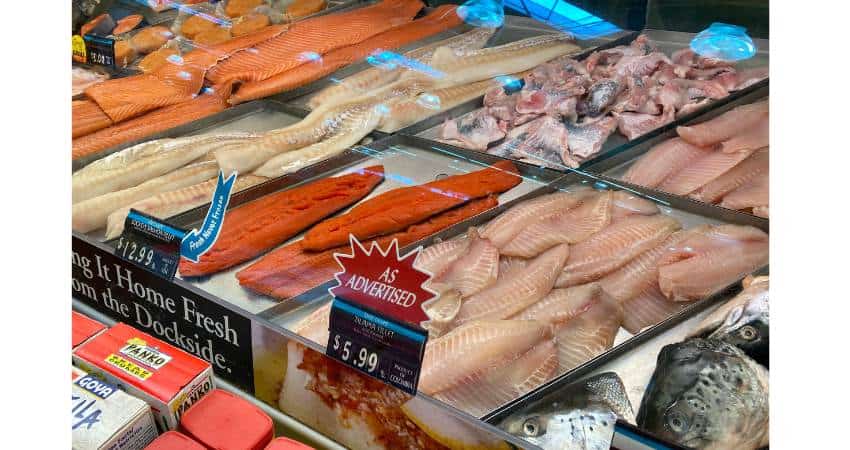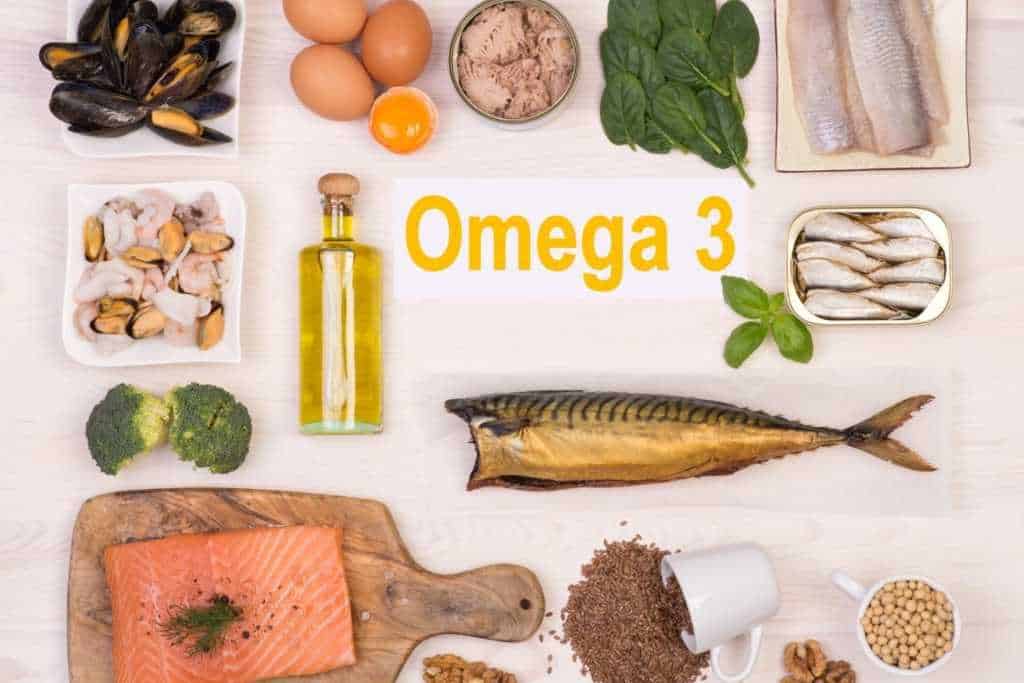Haddock vs Cod: Is One Better? A Complete Comparison
Haddock and cod look similar and both fish are from the same family. If you’re deciding which fish to cook for your next meal, you may have a difficult time deciding between the two fish. Answering this question may help, which is better cod or haddock?
Cod has a less fishy taste than haddock and due to its firmer texture can be used in more cooking methods. Cod is better due to its higher percentage of protein, omega-3 and minerals. It contains more thiamin, riboflavin, iron, potassium, magnesium, calcium, zinc and selenium.
This article will examine all the differences between the two including a side-by-side nutrient comparison. In addition, I’ll compare their tastes, textures, cooking methods, mercury levels and whether one can substitute for the other.
As a Certified Health Coach, many of my clients ask me about fish. In addition to coaching clients about haddock and cod, I’ve purchased, researched and consumed both fish for over 20 years.
Haddock vs Cod: Tastes and Textures
Haddock Taste and Cod Taste
Let’s face it, a huge decision when deciding between two fish to eat, is their tastes. Therefore, what’s the difference between the cod taste and haddock taste?
Haddock is more flavorful and has a fishier taste than cod. Cod is more mild than haddock making it better for people who don’t enjoy a fishy taste. Although haddock’s fishy taste is not overpowering and most people can tolerate it more than seafood with a fishier flavor.
Cod has a mild, non-fishy taste. It also has a mild to sweet flavor. It is good for people who want to avoid a fishy tasting seafood or strong taste.
Haddock is mild with a slight fishy taste. It has strong flavor that’s not overpowering for people who don’t enjoy a fishy smell or flavor.
The difference between the tastes of the two white fish are not large, and most people wouldn’t consider them to be much different. Both are two very good eating fish.
I tested this by polling my health coaching clients, people in food groups I belong to and my readers. Here’s what my original research concluded.
- 59% said they preferred the cod.
- 41% said they preferred the haddock.
I did more taste research by setting up a blind taste test at my home. Both white fish were seasoned and cooked the same way. Three out of four chose the haddock.
Textures
Cod is firmer than haddock’s tender to firm texture. The firmer texture holds together better when grilling or searing. A cod fillet is thicker and has larger flakes.
The Pacific cods have more moisture to them than Atlantic cods. Their fillets have large flakes and are thicker than many others.
Haddock has medium sized flakes and is tender but slightly firm. Their fillets are a little thinner with smaller flakes.
Substitutes
Sometimes you won’t have the exact fish for a recipe, or the seafood section of the supermarket doesn’t have what you need. Especially haddock which is more difficult to find. Therefore, let’s examine if you can substitute one for the other
Cod can substitute for haddock due to their similar milder tastes although the textures are sightly different. Substituting cod increases the methods of cooking including grilling or steaming due to it’s firmer texture. They both can be fried, baked or poached.
Haddock can substitute for cod due to their similar mild to sweet tastes. If grilling, haddock can’t substitute because the flesh falls apart easier. Haddock can substitute when frying, poaching, broiling and baking.
Good substitutes for cod fish include:
- Pollock
- Haddock
- Halibut
- Striped bass
- Tilapia
- Mahi mahi
Good substitutions for haddock include the following:
- Halibut
- Tilapia
- Branzino
- Cod
- Rainbow trout
- Butterfish
When substituting either one try to stick to the following:
- Same size and weight.
- Stick with similar fillets, whole fillet or cross section.
- Stick with skinless or skin when the recipe calls for one.
- Texture is more important for certain cooking methods. Like using a firmer texture when grilling1.
The color of the flesh for them are the same, they are considered white fish. While raw their flesh is a translucent white to pink color. Cooked both fish’s flesh turn to an opaque whitish color.
Haddock is better than cod for fish and chips due to its stronger flavor and more tender texture. It hold ups well to deep frying which is necessary for fish and chips.
Haddock is a good fish to eat due to its strong flavor and tender to firm texture. It’s not too fishy making it a favorite fish for those who dislike very fishy tastes.
The Costs
The cost of either one may differ depending on the location, fresh or frozen and whether it’s farm raised or wild caught. Haddock vs cod, let’s find out which one is more expensive.
Haddock and cod have a similar price. The average cost for wild caught cod is $14.99 per pound while the average cost for wild caught haddock is $14.99 per pound.
I conducted original research on costs by visiting various stores and checking their prices.
First, I checked Freshdirect for the current prices.
- Fresh, wild caught haddock fillet
- $15.99 per pound
- Fresh, wild caught cod
- $16.99 per pound
I checked the local Shopright supermarket and found the following prices:
- Fresh wild caught Alaska cod fillet
- $8.99 per pound
- Fresh wild North Atlantic cod fillet
- $12.99 per pound
- Fish wild North Atlantic haddock fillet
- $13.99 per pound
The availability of haddock will be more difficult to find in your local supermarket. You’d have a better chance finding it in a fish market or online.

Haddock vs Cod: Habitats, Size, Weight, Appearance
Let’s take a detailed look at the differences between the two.
Haddock and cod are both from the Gadidae family and are different species. Cod are typically bigger and weigh more. Haddock’s color is dark gray while cod its more brownish. Both fish are found in the North Atlantic Ocean, but cod are also in the Pacific Ocean.
Haddock is sometimes used as scrod. If you’re interested in learning about scrod, check out my article about it, Scrod: There’s More To The Story.
Scientific Classifications, Families, Species
- Haddock are from the Gadidae family, Melanogrammus genus and M. aeglefinus species.
- Cod are from the Gadidae family, Gadus genus and species are morhua (Atlantic cod), macrocephalus (Pacific cod) and ogac (Greenland cod).
Habitats
Haddock are found on both sides of the North Atlantic Ocean. In the western side they are found from Cape May, New Jersey in the United States up to Newfoundland in Canada and mostly in the Gulf of Maine. In the eastern waters, they are found north of the English Channel2.
Atlantic cod is found in the Northwest Atlantic Ocean from Greenland to North Carolina and in the western Gulf of Maine. Pacific cod is found in the North Pacific Ocean from the Bering Sea to California in the east and to the Sea of Japan in the west.
Colors
- Haddock is dark gray with a dark gray lateral line running down the body.
- Cod is brownish with dark spots with a cream lateral line running down the body.
Appearance
- Haddock is the typical long, narrow body shape and has three dorsal fins. More narrow than a cod.
- Cod is the typical long, narrow body shape and has three dorsal fins.

Size and Weight
- Haddock grows 12-36″ in length and weighs 2-7 pounds.
- Cod grows an average 27-34″ in length and weighs 5-15 pounds.
Cod is generally larger than haddock.
Age
- Haddock live up to 10 years.
- Cod up to 12 years.
Haddock and Cod Nutrition Comparison
The table below lists the nutrients per four ounces.
| Nutrient | Cod, raw (4 Ounces) | Haddock, raw (4 Ounces) |
| Calories | 93 | 84 |
| Fat | 0.8 g | 0.5 g |
| Saturated Fat | 0.1 g | 0.1 g |
| Cholesterol | 49 mg | 61 mg |
| Protein | 23 g | 19 g |
| Omega-3 | 0.22 g | 0.16 g |
| B-6 | 0.2 mg | 0.3 mg |
| B-12 | 1.0 mcg | 2.0 mcg |
| Thiamin | 0.08 mg | 0.02 mg |
| Riboflavin | 0.07 mg | 0.06 mg |
| B5 | 0.1 mg | 0.4 mg |
| Iron | 0.4 mg | 0.1 mg |
| Niacin | 2.3 mg | 3.8 mg |
| Folate | 7.9 mcg | 13.6 mcg |
| Potassium | 468 mg | 324 mg |
| Magnesium | 36 mg | 23 mg |
| Phosphorus | 230 mg | 257 mg |
| Calcium | 18.1 mg | 12.4 mg |
| Zinc | 0.5 mg | 0.3 mg |
| Selenium | 37.5 mcg | 29.4 mcg |
Nutrient Sources ((Nutrition Value: Fish, raw, Atlantic, cod)) ((Nutrition Value: Fish, raw, haddock))
Both fish contain a wide variety of similar nutrients. Cod contains more of some while haddock contains more of others. Therefore, let’s determine if one is healthier.
Cod is healthier than haddock due to its greater number of heart healthy omega-3 fatty acids, less cholesterol, more protein and minerals than haddock. It contains more thiamin, riboflavin, iron, potassium, magnesium, calcium, zinc and selenium.
Vitamin
Haddock is no slouch either and contains more vitamin B than including, B6, B12, B5, niacin and folate.
Diet
Let’s examine which of the two is better for weight loss. Haddock has 9 fewer calories per four ounces making it slightly better for losing weight.
The difference is not huge and the secret is in how each fish is prepared.
While shopping I’ll often choose the cod due to its availability and nutrition advantage.
Haddock and Cod Health Benefits
Omega-3 Fatty Acids
Cod has more omega-3 fatty acids than haddock. Omega-3 fatty acids are heart healthy and help keep arteries healthy. One way they accomplish this is by keeping bad cholesterol low and good cholesterol high.
Two of the fatty acids, DHA and EPA are associated with lowering blood pressure and improving the health of blood vessels ((National Center for Biotechnology: Marine Omega-3 Supplementation and Cardiovascular Disease)).
In addition, they help keep the blood vessels healthy by reducing inflammation, plaque build-up, triglycerides and can help keep the heart rhythms more normal.
Studies suggest omega-3s can help reduce joint pain and stiffness in people with rheumatoid arthritis. They may also boost the effectiveness of anti-inflammatory drugs.
I recently wrote an article comparing black cod. If you’re interested in how many omega-3s they contain or just want to learn about them, check out my article, Black Cod – Is There A Difference?

Magnesium
Cod provides more magnesium than haddock. Adding magnesium to your diet could be instrumental in improving sleep quality. More so, it helps keep blood pressure levels balanced and stable ((National Institutes of Health: Magnesium)).
Magnesium relaxes and calms the whole body including the blood vessels. A recent study researched 22 studies and concluded magnesium supplementation decreased systolic and diastolic blood pressure3.
B Vitamins
Both contain many vitamin B vitamins, although haddock provide a higher percentage. Vitamin B help support the following:
- Digestion
- Red blood cells
- Brain function
- Energy levels
- Nerve function
- Cardiovascular health
Potassium
Potassium is beneficial for reducing sodium intake. It helps the body reduce fluids and rids excess sodium ((American Heart Association: How Potassium Can Help Control High Blood Pressure)). This process helps to reduce blood pressure.
Calcium
Calcium, like magnesium is important for blood pressure and the heart. Harvard Health reports calcium helps maintain or lower blood pressure because it helps to control the relaxing and tightening of blood vessels4.
Selenium
Both contain good amounts of selenium, almost equal. Studies5 show selenium may help to protect the following:
- Immune system
- Heart disease
- Cognitive issues
- Thyroid health
What about cod vs tilapia? Check out the battle of these heavyweights in my article here, Tilapia – A Complete Comparison.
Another article you should check out is Cod Alternatives: The 12 Best Substitutes. Try other fish like for variety or when it is unavailable.
Haddock and Cod Mercury Levels
The FDA and the EPA have warnings and suggestions regarding mercury levels in fish and how often to consume them6. This is especially important for pregnant women, breastfeeding or for young toddlers and infants.
They established a list of best choices, good choices and ones to avoid based on their mercury levels.
Haddock and cod contain similar mercury levels. They are listed on the FDA’s best choices in regards to mercury levels.

Always check with a physician prior to eating new foods, changing your dietary habits and how often to consume certain fish.
If you have any questions about this article or other posts, don’t hesitate to email notify us. You can find an email on our contact page. We’ll do our best to reply as soon as possible.
Read Next – More Cod vs Fish Articles!
Flounder vs Cod: Is One Better? Let’s Compare
Blue Cod Vs Cod – A Complete Comparison
Halibut vs Cod: The Differences In Detail
- Sea Grant North Carolina: Fish Flavors and Substitutions [↩]
- Wikipedia: Haddock [↩]
- National Center for Biotechnology Information: Effect of magnesium supplementation on blood pressure: a meta-analysis [↩]
- Harvard Health: Key minerals to help control blood pressure [↩]
- National Institutes of Health: Selenium [↩]
- FDA: Advice about Eating Fish [↩]

Haddock all the way. I find cod to be soft and mushy. In my opinion, haddock has a consistent, smooth fish taste. Never known one to be bitter or sharp.
Sadly, haddock is harder to find.
Good article, even though I disagree with some statements I did find it interesting that 3 out of 4 preferred the Haddock:)
Thank you, I appreciate it!